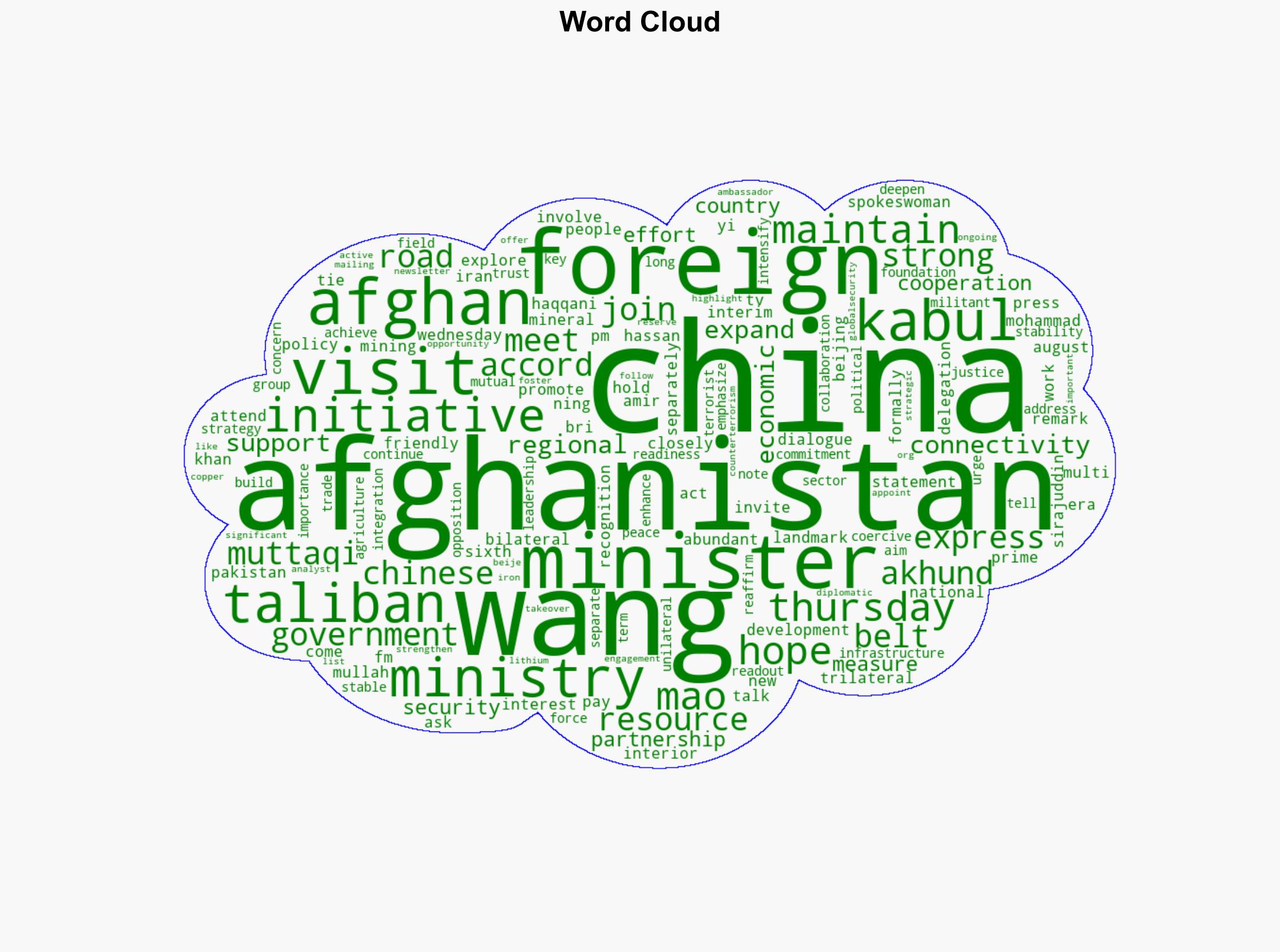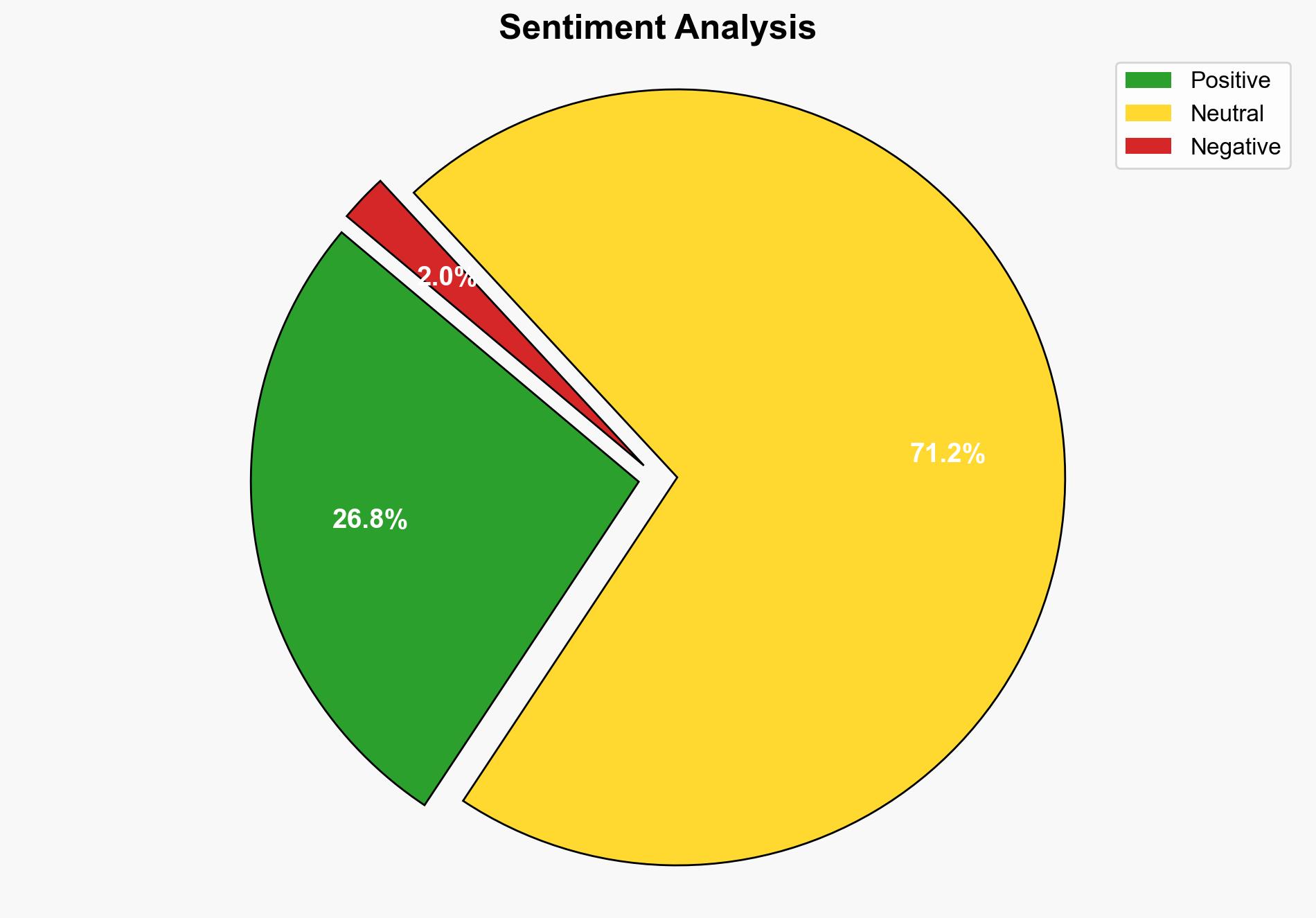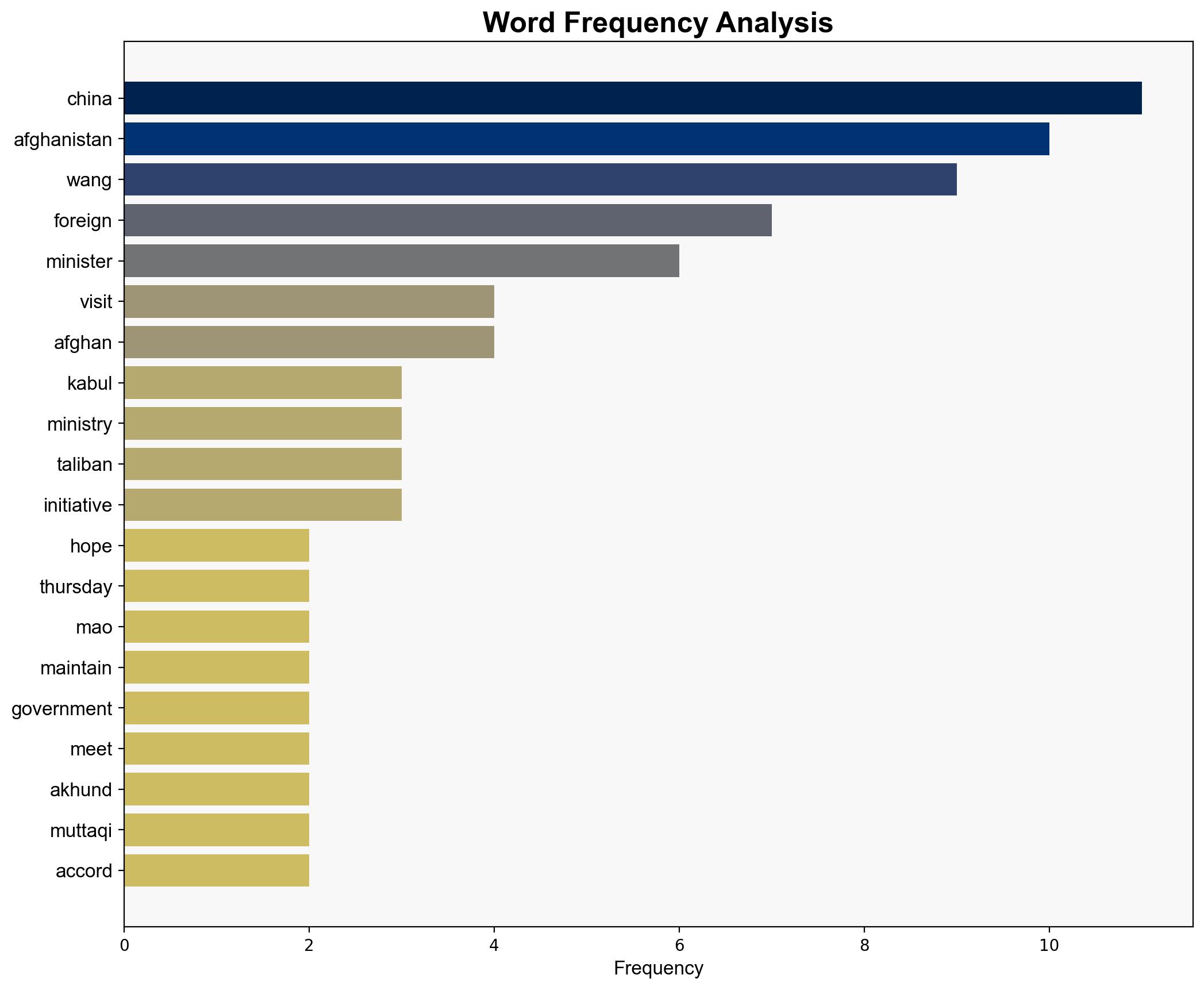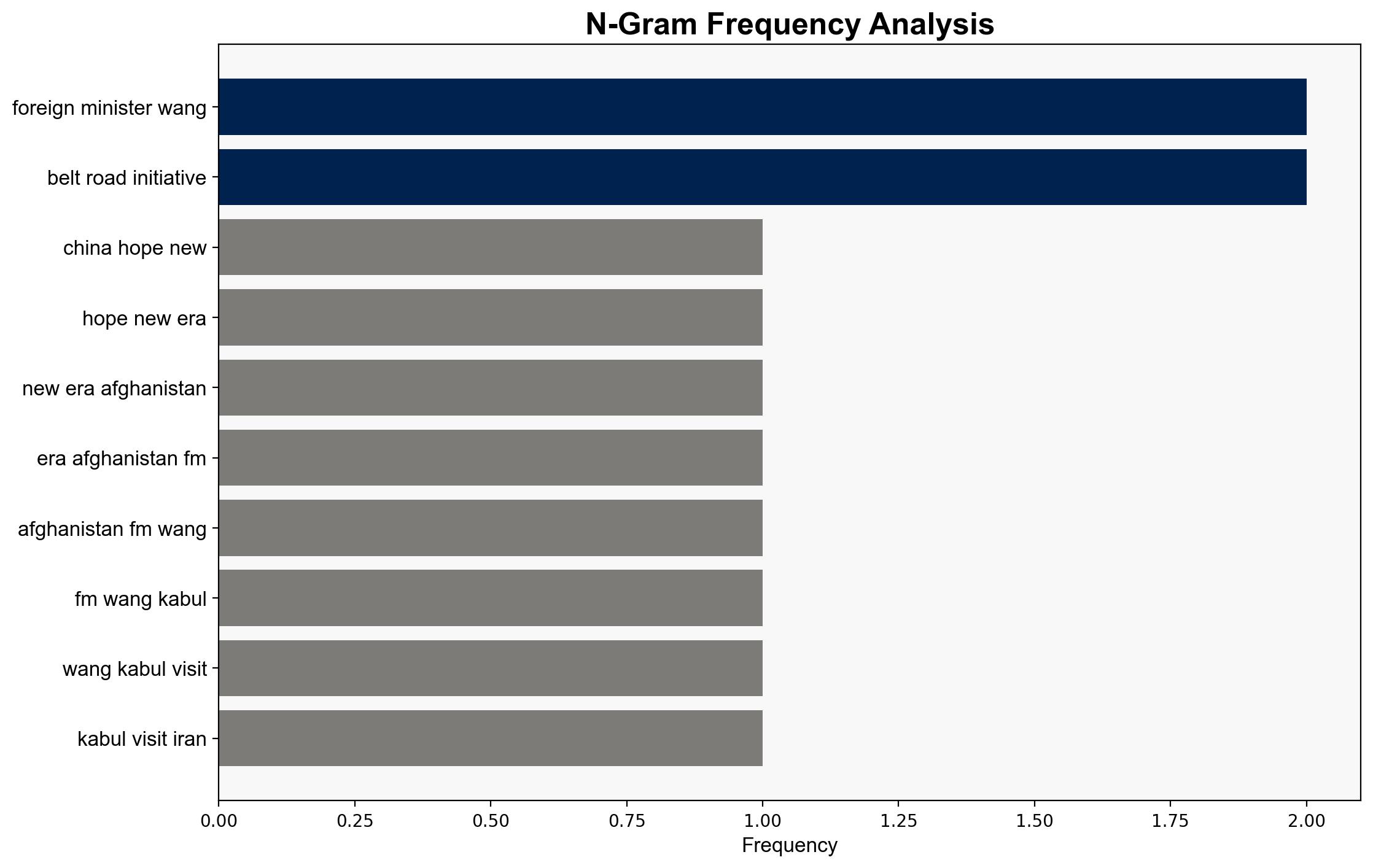China hopes for new era in Afghanistan with FM Wang’s Kabul visit – Globalsecurity.org
Published on: 2025-08-22
Intelligence Report: China hopes for new era in Afghanistan with FM Wang’s Kabul visit – Globalsecurity.org
1. BLUF (Bottom Line Up Front)
China’s strategic engagement with Afghanistan, as highlighted by FM Wang’s visit, suggests a dual focus on economic integration and security cooperation. The most supported hypothesis is that China aims to leverage Afghanistan’s resources and strategic position to enhance its Belt and Road Initiative (BRI) while ensuring regional stability. Confidence level: Moderate. Recommended action: Monitor China’s diplomatic and economic activities in Afghanistan to assess shifts in regional power dynamics and potential impacts on global resource markets.
2. Competing Hypotheses
1. **Hypothesis A**: China is primarily motivated by economic interests, seeking to secure access to Afghanistan’s mineral resources and integrate the country into the BRI to enhance regional connectivity and economic growth.
2. **Hypothesis B**: China’s engagement is driven by security concerns, aiming to stabilize Afghanistan to prevent the spread of extremism and protect its western borders, while using economic incentives as a tool to achieve these security objectives.
Using ACH 2.0, Hypothesis A is better supported due to China’s explicit interest in Afghanistan’s mineral resources and the invitation to join the BRI. However, the emphasis on security cooperation and counterterrorism measures lends some support to Hypothesis B.
3. Key Assumptions and Red Flags
– **Assumptions**: It is assumed that Afghanistan’s interim government can effectively partner with China and that the security situation will remain stable enough to allow for economic projects.
– **Red Flags**: The lack of explicit recognition of the Afghan interim government by China could indicate hesitance or strategic ambiguity. The potential for internal Afghan instability or external geopolitical pressures could disrupt China’s plans.
– **Blind Spots**: The report does not address potential resistance from local Afghan factions or international actors who may oppose China’s increasing influence in the region.
4. Implications and Strategic Risks
– **Economic Risks**: China’s investment in Afghanistan could face challenges from local instability or international sanctions.
– **Geopolitical Risks**: Increased Chinese presence may provoke reactions from other regional powers, potentially leading to heightened tensions.
– **Security Risks**: Failure to stabilize Afghanistan could result in increased regional extremism, impacting China’s security interests.
5. Recommendations and Outlook
- Monitor developments in China’s BRI projects in Afghanistan to assess their progress and impact on regional connectivity.
- Engage with regional partners to ensure a balanced approach to Afghanistan’s development, mitigating potential geopolitical tensions.
- Scenario Projections:
- Best Case: Successful integration of Afghanistan into the BRI, leading to regional economic growth and stability.
- Worst Case: Escalation of regional tensions and internal Afghan instability, disrupting Chinese projects.
- Most Likely: Gradual progress with intermittent challenges due to security and political factors.
6. Key Individuals and Entities
– Wang Yi
– Mullah Mohammad Hassan Akhund
– Sirajuddin Haqqani
– Amir Khan Muttaqi
7. Thematic Tags
national security threats, cybersecurity, counter-terrorism, regional focus





